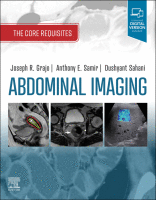Physical Address
304 North Cardinal St.
Dorchester Center, MA 02124

Anatomy ◼ Adenomas can develop anywhere in the colon or rectum but are seen with the greatest frequency in the sigmoid colon. ◼ The frequency of polyp occurrence in each section of the colon is approximately as follows: rectum 15%;…

Anatomy ◼ The arterial supply of the small bowel is predominantly from the celiac axis and superior mesenteric artery (SMA). ◼ The inferior mesenteric artery (IMA) and the internal iliac arteries may become important contributors in the setting of arterial…

Types of bowel surgeries, their indications, and postprocedural anatomy Esophagectomy All esophagectomy techniques involve partial or complete resection of the esophagus with a new anastomosis to esophagus, stomach, or bowel. Benign indications include esophageal perforation (iatrogenic from endoscopy/biopsy/balloon dilation, traumatic…

Anatomy, embryology, pathophysiology ◼ Most of the small and large bowels originate from the midgut, except the proximal duodenum (up to the ampulla of Vater), which originates from the foregut, and the portion of the colon distal to the proximal…

Anatomy, embryology, pathophysiology ◼ The small bowel is a long, mobile, and compressible tubular structure located in the mid-abdomen, surrounded circumferentially by the large bowel. ◼ The small bowel caliber is normally smaller than 3 cm (outer wall to outer…

Anatomy, embryology, pathophysiology ◼ Extraluminal air is a worrisome finding that should immediately heighten the suspicion of the radiologist to a potentially life-threatening complication. ◼ The gastrointestinal (GI) tract is lined by inner circular and outer longitudinal muscularis layers, except…

Anatomy, embryology, pathophysiology ◼ The stomach is anatomically subdivided into the cardia, fundus, body, and antrum, with inflow regulated by the lower esophageal sphincter and outflow by the pyloric sphincter. ◼ The incisura angularis represents the acute angle formed on…

Techniques ◼ Fluoroscopy is an imaging modality where continuous x-ray images are obtained to evaluate the body in real time, often with the aid of administered radiopaque contrast material ( Fig. 2.1 ). ◼ Fluoroscopic examinations attempt to answer specific…

Anatomy, embryology, pathophysiology ◼ There are five distinct densities in plain radiography, four of which are natural: gas (black), fat (dark gray), soft tissue (medium gray), calcifications (white), and metal (intense white). ◼ Dedicated assessment of each density is essential…